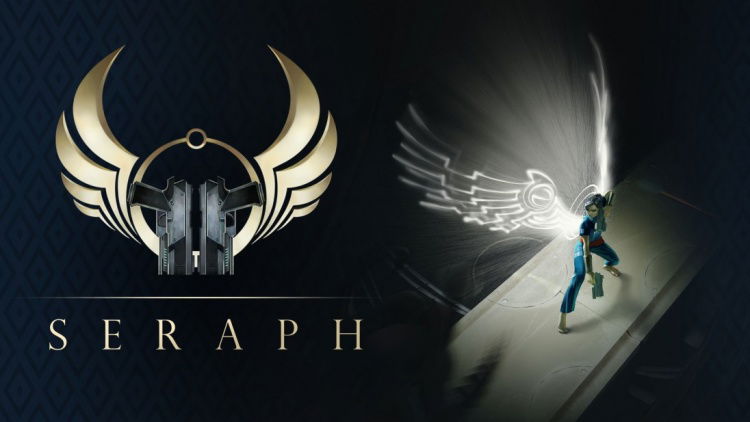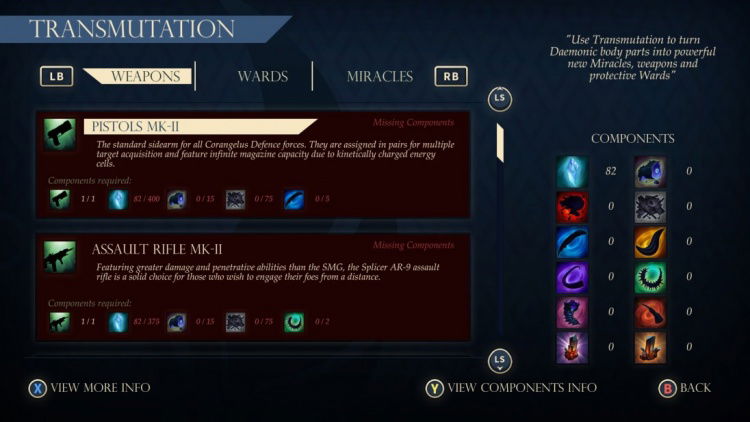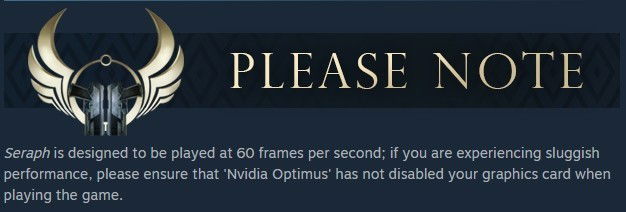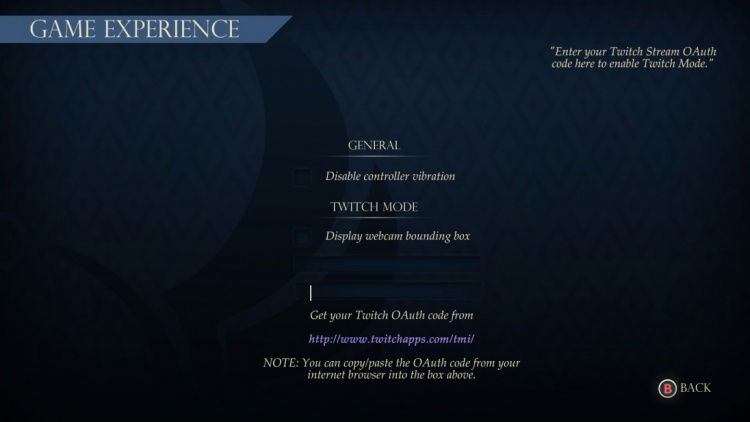“This angel is packing a pair of pistols”
When it comes to 2D side-scrolling shooters, I’m usually in front of the line to play them. It doesn’t matter if it’s a SHMUP, or something similar to Contra or Metal Slug, I’m game for just about anything. Though this time I’ve taken hold of a game that looks like a 2D side-scroller, yet it doesn’t give you access to aiming the weapons that your character holds. Seraph is the name of the game and it attempts to break the mold that many people, including myself, are used to.
Game Name: Seraph
Platform(s): PC
Publisher(s): Dreadbit
Developer(s): Dreadbit
Release Date: April 26, 2016 (Early Access)
Price: $12.99
*Disclaimer – This is a review based on a game that is still in Early Access. As such the game may undergo several changes, all of which will be updated at a later date.
Right off the bat I’m was told that Seraph isn’t like any other game I’ve played before, which isn’t a bad thing. The developer of the title, Dreadbit, have instead taken a proven formula and has attempted to put their only unique spin on things. You see in Seraph, you play the role of an angel who has been imprisoned for one reason or another (I won’t tell you) and due to some act you are freed. However, that left some really results lingering around and oddly enough this has trapped you where you are. So what’s an angel to do? Well in Seraph, you pick up two pistols, hold them all gangsta and begin to trim down the demons who are preventing from leaving.

Along the way, you’re able to pick up different weapons that have a limited amount of ammo, though you can switch back and forth. A useful strategy if you want to save them for a harder enemy or if you just enjoy the challenge of playing with your default pistols.
In addition, you also have an upgrade system that is handled outside of the gameplay. Here you can use the items you collect during the game to enhance your character. You have the option of either upgrading specific character traits which are called Oaths, as well as Transmutations which let you upgrade your weapons or even create new miracles for use in the game. There’s definitely a lot of depth that can be found here by hitting up the upgrade section fairly often, though I’ve found that the game doesn’t require you to do this if you don’t want to.
What I also found pretty interesting about Seraph is that there’s also an online feature in the form of daily challenges. Upon choosing a daily challenge, you’re thrust into a level that’s full of randomly appearing enemies, who have one goal. You on the other hand also have a goal, which is to collect as many multipliers and XP as you can, without taking too much damage before you die. Make no mistake, the challenge mode is designed to kill you and do it fast. It just depends on good you are and how long you can survive. The daily challenges will definitely keep you coming back for more, especially if you got a friend who’s a bit higher on the scoreboard than you are.
The game does feature the normal difficulty options; Standard, Hard (3.0) and Extreme (7.0). However, what the game does but doesn’t outright tell you is that it slowly ramps up the difficulty as you progress based on how well you play. If you die a lot or take lots of damage, then the ramp up is slow. Do well, and you’ll find out that the dynamic difficulty will start to progress, all of which is monitored in the lower left of the screen.
https://youtu.be/2HNTsPzo4ow
Since Seraph is all about jumping and dodging, more so than shooting, you would imagine that the controls need to be precise. The game does not disappoint when it comes to the controls. They aren’t just tight and responsive, indeed, they are very tight and responsive. The reason you end up taking hits or dying is due to any mistakes you may make.
The real kicker about Seraph is that it was designed two unique features, which tells you who this game was created for. The first is that the game calls for a consistent 60 frames per second experience. I kid you not on this and this is stated very clearly on the Steam store page for Seraph. Thankfully the requirements for playing Seraph are pretty low, so most computers from the last 5-6 years are able to run this.
The second is that Dreadbit has incorporated Twitch into the game as well. In this day and age where games are streamed around various platforms more and more, this only makes sense. But I’m just surprised that you don’t even need to launch OBS or Xsplit to stream this game. Instead, you just type in your username and Oath code. That’s it. They’ve even added a speed-run option, as streamers love to show off how well they can progress from level to level. If anything, this should make for some good streams and I can’t wait to see how fast people can run through Seraph.
Though while it seems that Seraph does a lot of things well, there are still some major issues that need to be addressed and thankfully are. Perhaps the most requested feature that Seraph is lacking the ability to re-bind keys and buttons.
Update: This was patched as of 5.1.2016
I also feel that Dreadbit missed their chance to add voice-overs for the story, as this style of game is perfect for it. Though this is an early access title, so they still do thave the opportunity to add this at a later date, if those so choose too. Lastly, I wasn’t a fan of how the game handles deaths. Basically, when you die the first time you are missing a chunk of your maximum health. Die again and this continues to affect your health. A third time forces you back to the menu screen so you can maybe switch up power-ups and then it drops you off at your recent checkpoint. That I don’t mind; however, when you do die, the damage you caused to enemies stays in effect. So for example, if you died at a boss, then when you get back to that boss character, his health is just how it was when you died. Enemies also don’t respawn upon death, which I feel cheapens the experience.
There’s also not an option to customize the graphics. Sure you can adjust the screen resolution and choose from windowed and full screen, but that’s it. While there really isn’t a need for this, it would be a nice option to have, especially if you are having a hard time reaching that magical 60 frames per second.
Finally, the game is a bit lacking on the content, which again is contributed to the fact that this is an early access game. Typically this would be some cause for alarm; however, Dreadbit has been very transparent on their plans for Seraph and has been slowly introducing fixes and updates for the title, so I won’t worry about that just yet. At the same time, there’s a lot to be said for Seraph, especially coming in at the price point that it does.
Seraph PC Review
While Seraph features a unique spin on a tried and true formula, I feel that Dreadbit is definitely on to something. Easily one of my favorite early access games in quite some time, I really enjoyed Seraph. Though the game is lacking in content, it makes up for it with its daily challenge mode, expansive upgrade system and dynamic difficulty which will keep you on your toes. That said, Dreadbit is serious about the reception of Seraph and has been listening to the fans of the title, so I don’t think the lack of content will be an issue for much longer. Definitely, something that fans of Metal Slug, Contra or similar games in the genre should check out. Pros:
- Twitch integration is a nice touch
- An interesting take on the genre
- The upgrade system and dynamic difficulty help keep things fresh
- The daily challenge mode will keep you coming back for more
Cons:
- Lack of PC-centric options
- Needs more content
- Combat can be a bit stale at times
-
Jump, doge, flip and shoot your way out of prison





